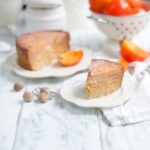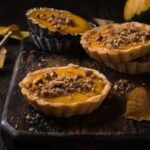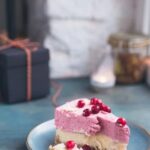What is the best icing for decorating cakes? Choosing the right icing for cake decoration is crucial in achieving both visual appeal and delicious flavor. The type of icing used can significantly impact the overall aesthetics and taste of the cake, making it an essential aspect of any cake decorating endeavor.
When it comes to cake decoration, the selection of icing plays a vital role in bringing a design to life. Different types of icing offer various advantages and disadvantages, making it important to understand which one suits your specific needs. From buttercream to fondant, royal icing, and cream cheese icing, each option brings its own unique characteristics and design possibilities.
Aside from the visual aspect, the choice of icing also affects the flavor profile of the cake. Whether it’s a rich and creamy buttercream or a smooth and versatile fondant, matching the icing’s flavor with the cake’s base flavor is essential for a harmonious overall taste. In this article, we will delve into the intricacies of choosing the best icing for decorating cakes and explore various factors to consider when making that decision.
Types of Icing for Cake Decorating
When it comes to cake decorating, choosing the right icing is crucial to achieving the desired aesthetic and flavor. There are several different types of icing that can be used for cake decoration, each with its own advantages and disadvantages. Understanding the characteristics of each type of icing is essential in order to make an informed decision on which one to use for a specific cake design.
Here are some common types of icing for cake decorating:
- Buttercream: Buttercream is a classic choice for decorating cakes due to its smooth texture and versatility. It can be easily colored and flavored, making it suitable for various design techniques such as piping, frosting, and creating intricate details. However, buttercream can be sensitive to warm temperatures and may not hold up well in certain conditions.
- Fondant: Fondant is a popular choice for creating sleek and professional-looking cake designs. It provides a smooth canvas for intricate decorations and can be molded into different shapes and textures. On the downside, fondant has a chewy consistency that some people may not enjoy, and it requires skill to work with effectively.
- Royal Icing: Royal icing is known for its hard and glossy finish, making it ideal for creating detailed designs such as lacework, flowers, and intricate patterns. It sets quickly when exposed to air, which makes it great for building 3D structures on cakes. However, royal icing can be prone to cracking if not used properly.
- Cream Cheese Icing: Cream cheese icing offers a tangy flavor that complements various cake flavors such as red velvet or carrot cake. It has a creamy texture that is perfect for spreading or piping onto cakes. The downside is that cream cheese icing may not hold up well in warm temperatures due to its softer consistency.
Consider what type of designs you want to create as well as the climate conditions in which the cake will be displayed when choosing the best icing for your decorating needs. Each type of icing has its own unique qualities that make it suitable for specific applications in cake decoration. Experimenting with different types of icing will help you discover which one works best for your desired designs and flavors.
Factors to Consider When Choosing the Best Icing
When it comes to choosing the best icing for decorating cakes, there are several important factors to consider. The right icing can greatly impact the overall look and flavor of your cake, so it’s essential to make an informed decision. From texture and temperature sensitivity to flavor profile, there are several key considerations that can help you choose the best icing for your specific cake decoration needs.
Texture
One of the most important factors to consider when choosing the best icing for cake decoration is texture. Different types of icing have different textures, ranging from smooth and creamy to firm and pliable. Buttercream, for example, is known for its smooth and spreadable texture, making it ideal for both filling and frosting cakes. On the other hand, fondant has a more elastic texture, allowing for sculpting and shaping intricate designs.
Temperature Sensitivity
Another crucial consideration is the temperature sensitivity of various icing options. Depending on the climate conditions in which you’ll be decorating your cake, certain icings may be more or less suitable. For example, buttercream can become too soft in warm temperatures, making it challenging to work with in hot climates. Fondant, however, holds up well in both warm and cool environments, making it a versatile option for cake decoration.
Flavor Profile
In addition to texture and temperature sensitivity, it’s also important to consider how different icing flavors pair with various cake flavors. While some icings have a neutral flavor that complements a wide range of cakes, others have distinct flavors that may be better suited to specific cake flavors.
For example, cream cheese icing is often paired with red velvet cakes due to its rich and tangy flavor profile. Considering the flavor profile of your chosen icing is essential for achieving a harmonious balance between the icing and cake flavors.
By taking into account these factors – texture, temperature sensitivity, and flavor profile – you can make an educated decision about which type of icing will best suit your specific cake decoration needs. Whether you’re decorating a wedding cake with intricate designs or a birthday cake with fun and colorful decorations, considering these factors will ensure that you choose the best icing for your desired outcome.
Best Icing for Specific Cake Designs
When it comes to decorating cakes, choosing the right icing is crucial in achieving the desired aesthetic and flavor. Different cake designs call for specific types of icing that can enhance the overall appeal of the cake. Whether you’re creating an intricate wedding cake, a colorful birthday cake, or a festive holiday cake, selecting the best icing is essential for a successful decoration.
Here are some recommendations for the best icing options for specific cake designs:
- Wedding Cakes:
- Fondant: Ideal for creating smooth and flawless finishes, perfect for elegant and intricate designs.
- Royal Icing: Great for delicate details and intricate piping work, ideal for decorative elements such as lace or floral patterns.
- Birthday Cakes:
- Buttercream: Versatile and easy to manipulate into various shapes and designs, ideal for fun and colorful decorations perfect for birthday celebrations.
- Cream Cheese Icing: Adds a rich and creamy flavor that pairs well with classic birthday cake flavors like red velvet or carrot cake.
- Holiday Cakes:
- Royal Icing: Perfect for creating intricate designs on holiday-themed cakes such as snowflakes, holly leaves, or Christmas ornaments.
- Fondant: Great for sculpting figurines or creating detailed decorations to match the holiday theme.
Choosing the best icing for specific cake designs not only enhances the visual appeal but also ensures that the flavor complements the overall theme of the cake. Experimenting with different icing options can help you discover your personal preferences and perfect your cake decorating skills.
Essential Tools and Techniques for Using Icing in Cake Decoration
When it comes to cake decoration, having the right tools and techniques is crucial in achieving professional-quality results. Piping bags and tips are essential for creating intricate designs, whether it’s delicate swirls or detailed lettering. Different types of piping tips can create various shapes and textures, allowing for endless creativity with icing.
Spatulas and scrapers are also important tools for achieving a smooth finish with different types of icing. They help in spreading the icing evenly and creating a flawless surface for decorations.
In addition to piping bags and spatulas, stencils and molds can take cake decoration to the next level. These tools allow for creative and consistent designs, whether it’s adding patterns to fondant or creating raised embellishments on buttercream. Stencils come in a variety of designs, from floral patterns to geometric shapes, while molds can be used to make 3D decorations like flowers or leaves.
Aside from the tools, mastering various techniques is also key in using icing for cake decoration. Color mixing is an important skill for creating custom icing shades that complement the overall design of the cake.
Layering techniques involve using different types of icing to add depth and dimension to decorations – for example, using royal icing for delicate details on top of a fondant-covered cake. Finally, paying attention to texture and detail is crucial for achieving professional-looking decorations – this can involve creating intricate lace patterns with royal icing or carefully sculpting figurines out of fondant.
| Tools | Techniques |
|---|---|
| Piping Bags and Tips | Color Mixing |
| Spatulas and Scrapers | Layering Techniques |
| Stencils and Molds | Texture and Detail |
Tips for Achieving Professional-Quality Cake Decorations
When it comes to achieving professional-quality cake decorations, choosing the right icing is essential. It can make a significant impact on the final look and taste of the cake. However, there are also other important factors to consider in order to achieve stunning results in your cake decorating endeavors.
One crucial aspect to consider when aiming for professional-quality cake decorations is color mixing. Creating custom icing shades can take your designs to the next level and make them stand out. By learning how to mix different food coloring and icing shades effectively, you can create eye-catching and vibrant designs that are sure to impress.
Another important tip for achieving professional-quality cake decorations is mastering layering techniques. Incorporating multiple icing types can add depth and dimension to your designs. Whether it’s using buttercream as a base and fondant for intricate details, or combining royal icing with cream cheese frosting for added texture, layering different icings can elevate the overall look of your cake decorations.
Lastly, paying attention to texture and detail is crucial for achieving professional-quality cake decorations. Adding intricate details such as flowers, borders, or figures with precision can take your cakes from amateur to expert level. Learning how to work with different piping tips and tools will help you achieve flawless textures and add fine details that will impress anyone who sees or tastes your creations.
Troubleshooting Common Icing Challenges
Cracking and Crusting
One common challenge when it comes to icing for cake decoration is the occurrence of cracking and crusting on the surface of the cake. This can be caused by factors such as over mixing the icing, using too much sugar, or working in a dry climate.
To prevent this issue, make sure to properly measure your ingredients and avoid over-mixing the icing. Additionally, you can add a small amount of liquid such as milk or cream to the icing to help maintain moisture and prevent cracking.
Melting and Sliding
Another issue that many bakers face when decorating cakes with icing is the problem of melting and sliding, especially in warm temperatures. To combat this, consider using a stiffer icing consistency for warmer climates.
You can also place the cake in a cool environment or use a chilling method to help the icing set and hold its shape. Furthermore, if you know that your cake will be displayed in warm conditions, consider using alternative decoration methods such as fondant or gum paste, which are more resistant to heat.
Bulging and Air Bubbles
Bulging and air bubbles under the surface of the icing can also be a common frustration when decorating cakes. To avoid bulging, ensure that your cake layers are properly leveled and filled with an even layer of filling before applying the icing.
As for air bubbles, gently tap the cake on a flat surface after applying the icing to release any trapped air. Using a small pin or needle to carefully puncture any visible air bubbles can also help achieve a smooth finish on your decorations.
These troubleshooting tips can help you overcome common challenges when using different types of icing for decorating cakes. By being mindful of texture, temperature sensitivity, flavor profile, and proper techniques for working with your chosen type of icing, you can achieve professional-quality results in your cake decorations.
Conclusion
In conclusion, choosing the best icing for decorating cakes is a crucial decision that can greatly impact the overall aesthetics and flavor of the cake. Each type of icing has its own advantages and disadvantages, making it essential to consider factors such as texture, temperature sensitivity, and flavor profile when selecting the ideal option for your cake decoration needs.
Whether you’re decorating a wedding cake with intricate designs, a birthday cake with fun and colorful decorations, or a holiday cake with seasonal themed designs, there are specific icing recommendations for each occasion. It’s important to consider the design of the cake and the effect you want to achieve when choosing the best icing for your specific cake design.
In order to achieve professional-quality cake decorations, it’s also essential to have the right tools and techniques at your disposal. From piping bags and tips to spatulas and scrapers, each tool plays a significant role in achieving a smooth finish and adding intricate details to elevate your cake decorations. By experimenting with different icing options and practicing various techniques, you can discover your personal preferences and create stunning cake designs that are sure to impress.
Frequently Asked Questions
What Type of Icing Is Best for Cake Decorating?
The best type of icing for cake decorating is buttercream icing. It’s versatile, easy to work with, and holds its shape well when piped onto cakes. Plus, it’s delicious!
What Kind of Icing Do Professionals Use?
Many professionals use a type of buttercream called Swiss meringue buttercream for cake decorating. It has a smoother texture and is less sweet than traditional buttercream, making it perfect for intricate designs.
What Is the Best Icing to Practice Cake Decorating?
When practicing cake decorating, it’s best to start with a simple buttercream icing. This allows beginners to get comfortable with piping techniques and frosting consistency before moving on to more advanced icings like fondant or royal icing. Buttercream is forgiving and perfect for honing your skills.

Welcome to my blog about home and family. This blog is a place where I will share my thoughts, ideas, and experiences related to these important topics. I am a stay-at-home mom with two young children. I hope you enjoy reading it! and may find some helpful tips and ideas that will make your home and family life even better!





